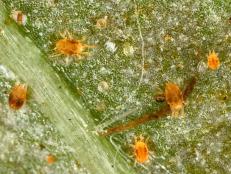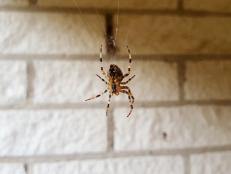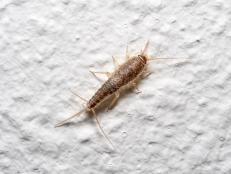How to Get Rid of Mice
Mice hanging around in your house is a problem that can rapidly get out of hand. Here’s what you need to know about keeping the mammals of the order Rodentia out of your home.

There are a number of strategies to deal with a mouse problem, ranging from prevention to repellent to trapping. Each has its own merits and flaws along with varying degrees of compassion for the mouse itself. We’re animal lovers here at HGTV, so we’ll start with the most humane methods and then touch on some solutions that should be used as a last resort.

Shutterstock/glenda
Option One: Simple Prevention
If you have mice in your house, it’s because they’ve found a habitat that they find suitable. The most humane option is to eliminate the conditions they find appealing and the methods they’re using to enter your house in the first place. Start by sealing off any cracks or openings that would allow a mouse to gain entry. It’s worth noting that mice can squeeze into holes as small as 1/2 inch, so make sure to seal up even the smallest of openings. If you can’t plug large holes, it’s a good idea to stuff them tightly with steel wool. Also, make sure the weather stripping around your windows is nice and tight, along with the weather stripping along the bottom sweep of all your doors.
If you’ve noticed that the mice are nesting in parts of your home or they're found something to use as nesting material, it’s wise to move those items or store them in strong plastic containers. Also, be mindful of any food sources that you’re storing inside or outside like dog food or bird seed. Remove any debris or stacks of firewood from around the outside of your home; these are areas that mice use to hide and create shelter. If you have a problem with mice burrowing around the foundation of your home, consider wrapping the outside perimeter with a heavy strip of gravel.
Option Two: Live Traps
If you’ve just got one or two rogue mice in your home and are sure it’s not really part of a larger problem, a steel live trap is a great way to catch mice and relocate them to greener pastures. Typically, you’ll want to set more than one and move it around if you don’t catch your mouse on the first try. For bait, use a little bit of oatmeal and peanut butter rolled into a ball. It’s a good idea to wear gloves or use a spoon to dish out your bait so the mouse won’t smell the oils from your hands. Mice have strong survival instincts and can survive on very little food, so they’re not afraid to walk away from a meal if they think it’s a trap.
Once you’ve caught your friendly mouse, go find a small creek or wooded area to turn it loose. Mice are part of the natural balance of the environment, so you’re just helping them get back to the work of being a mouse.
Option Three: The Circle of Life
If relocating your mice isn’t really an option, or if it’s a recurring problem, it might be worth adopting a cat. Cats make excellent family pets, and their presence is an active deterrent to rodents. Mice tend to avoid nesting in areas where they know active predators are present, but it’s important to remember that cats are simply a deterrent and not a solution to why you might have pests. Having a cat can be a wonderful addition to your family, but if you’re not ready for the commitment of a pet, it’s better to revisit the preventative solutions.
Option Four: Extermination
If you’ve found yourself with a mouse problem that’s completely out of control and a hazard to your living and sanitary conditions, it’s time to consider extermination. There are a number of options, from traps to poisons, available at your home center, and they can help you determine which is right for your applications. If the conditions require extermination, you’re far more likely to be successful with the help of a licensed professional. They’ll be able to target the specific areas that your mice are living in and safely apply poisons or deploy traps so that your family will be safe.














































